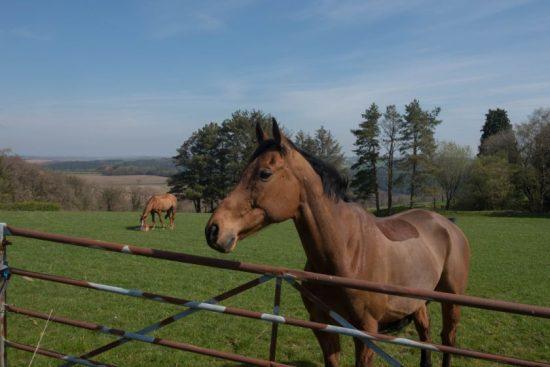Equine Health - Paddock Management
Paddock management to ensure equine health is not just a simple one-step job if you want to ensure the optimum nutrition and health benefits for your horse and pony. We have put together a quick guide to show all of the different tasks that need to be completed to get the most out of your paddock and to help you plan for the New Year to come.
Soil Health
In order to gain optimal grazing from your grass, it all starts with healthy soil. If the land has been subject to a lot of rain, many nutrients may have been leached from the area. Coupled with this, if the ground is boggy the soil may also be compacted which reduces root growth and spread - compacted soil should be aerated using either spikes, hollow core or a mole drain plough before treatment.
A great way to find out the health/nutrient content of your soil is by taking a soil sample and having it analysed. Check out our soil analysis kits here.
Fertilisers
Understanding the nutrient status of soil is key to healthy grass growth. Oversupply of nutrient fertiliser can be just as damaging as undersupply and can be very costly. To avoid this, you can easily find out the nutrient status of the soil by purchasing our mail order soil analysis service, the results of your soil analysis and the accompanying recommendation of products will give you a picture of exactly what your paddock needs.
Macro elements such as nitrogen, potassium, phosphate and sulphur are of paramount importance along with various micronutrients. When the correct fertilisers are used with the right elements included, they can drastically improve the health and quality of your paddock grass.
For more information on the nutrients that are present within fertilisers and what they do, take a look at our guide – Understanding N:P:K Ratios.
Weed Control
Weeds are always a problem in paddocks – sometimes causing a health danger to horses and sometimes competing for the same space, moisture and nutrients that the grass is using to grow and can eventually outcompete it. As a result this means that there is less food available for the horses to eat, so it is essential that control of these weeds is undertaken in combination with fertilising.
We hear from many paddock owners and some of the most common weeds that they find within their paddocks are; buttercups, docks, thistles, nettles and ragwort. All of these weeds require slightly different control timings and different products so it is important that you take a look at our ‘By Problem’ page for weeds to find out the best treatment method for them that you have. With some weeds such as ragwort it is important to remember that these are poisonous to horses and they should be kept out of the treated area until the weeds have completely died and been removed.
Seeding and Re-Seeding
Once weeds have been controlled within the paddock you may be left with gaps where the weeds used to grow. These gaps will need re-seeding with a mix that is suitable for horses to eat. Clover is commonly used in seed mixes as it adds a nutritional benefit to the grazing animal whilst the nitrogen within its root system adds goodness back in to the soil during dormancy. This addition of clover is only beneficial to paddocks with extremely poor soils or if there are under nourished horses. To avoid producing an overly lush growth, a seed mix without any added clover is recommended.
On top of this, herbs can also be added to a paddock seed mix to produce plants that are non-invasive but healthy and ideal for improving equine digestion. See our ‘Five Herb’ seed mix.
This is an essential step in maintaining equine health and keeping on top of paddock maintenance as paddocks are not only a space for exercise but a key part of any equine diet…feeding the soil (correctly) and improving the grass will ensure the horses are not fed ‘junk food’.





